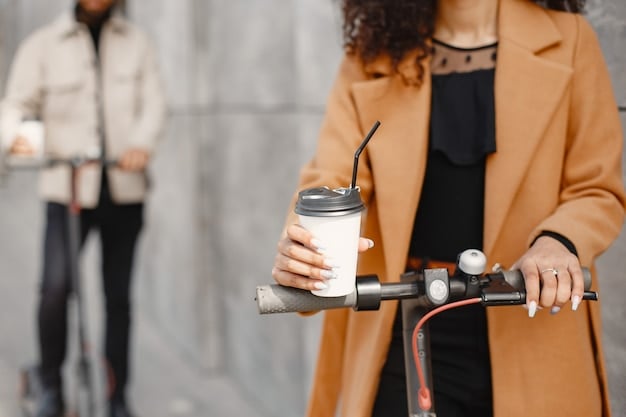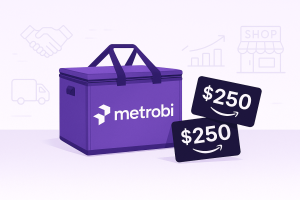Local coffee shop delivery isn’t just about getting drinks from point A to point B. In 2025, it’s becoming the main source of growth for small coffee shops.
But there’s a problem. Most coffee shop owners feel stuck between wanting to grow through coffee shop delivery and worrying about drink quality, staff management, and customer satisfaction. They’re right to be concerned. Hot drinks need special care during transport. Staff need new skills. And customers expect the same great experience they get in the shop.
This is where smart coffee shop delivery strategies come in. Coffee shops that succeed with local delivery follow specific methods. They use temperature-controlled containers, plan efficient routes, and train their staff in coffee-making and delivery service.
The good news? You don’t need to be a big chain to make coffee shop delivery work. Small coffee shops across the country are proving this every day. Take Sarah’s Coffee Corner in Portland – they started with just two delivery drivers and now handle 200 local orders daily. Their secret? They focused on their immediate neighborhood first, then expanded block by block.
We’ll show you how to expand your coffee shop with coffee shop delivery. From choosing the right packaging to building a loyal customer base, this guide covers everything you need to know to grow your business in 2025.
Want your coffee shop to reach more customers while keeping quality high? Let’s look at how. As you refine your delivery strategy, don’t overlook the importance of sourcing quality supplies. Every successful coffee shop in 2025 understands that having the right equipment and ingredients is crucial. For insights into the essentials you’ll need, check out this comprehensive guide on everything you need for your coffee shop success.
Lower your delivery costs by 23%
How we reduce costs:
- No delivery vehicle expenses
- Optimized local routes
- Pay-per-delivery model
- Average 23% delivery cost reduction
How to Expand Your Coffee Shop Business with Local Orders
Coffee shop delivery boosts revenue by drawing nearby customers.
Improve delivery logistics for better service.
Maintain quality during delivery to keep customers happy.
Build a Local Customer Base
Local orders are a powerful way to grow your coffee shop’s business. Focus first on creating a dedicated customer base. Start with local marketing strategies that target your neighborhood. Use flyers to catch attention. Host community events at your shop to engage people. These tactics help pull in more customers.
Social media is key. Join local groups and engage in conversations. Share updates about your coffee shop, new flavors, or specials. Being active on these platforms helps spread the word and attract more people. Additionally, plan special promotions. Offer discounts or deals only for local residents. This encourages them to choose your coffee shop over others. An attractive and thoughtful design can seamlessly convert visitors into loyal customers. The layout, lighting, and even the furniture can influence a customer’s experience as they sip their coffee. If you’re curious about how to create an enticing atmosphere that can draw more visitors, check out this insightful article on effective coffee shop design.
When setting up your coffee shop, having the right tools is essential for efficiency and quality. To help streamline your operations, consider using our ultimate checklist on coffee shop equipment that highlights must-have items to enhance your service and meet customer demands.
Optimize Delivery Efficiency
Coffee shop delivery logistics can make or break your local order system. Investing in technology to plan routes and track orders is essential. Use delivery apps that suggest the fastest paths. This saves time and improves delivery speed. Equip your staff with these tools. Training your team to use them efficiently ensures smooth operations.
Consumer Preferences: A survey indicated that 55% of consumers prefer to shop from stores that provide fast and flexible delivery options.
Partner with local delivery firms if you don’t have the resources in-house. These services have established networks for quick deliveries. They can help you reach more customers in your area. Ensure your staff members are skilled in customer interactions, too. A friendly and professional approach enhances the customer experience.
Maintain Quality During Delivery
Maintaining quality during coffee shop delivery ensures customer satisfaction. Use packaging that keeps coffee hot and fresh. Double-check orders before they leave your shop. Train your staff to handle food safely to avoid spills or changes in flavor. Consistency in quality builds trust and loyalty among your local customers. Finding the right talent is essential for running a successful coffee shop. A well-selected manager can enhance operations, boost staff morale, and improve the overall customer experience. Consider tips for selecting the ideal coffee shop manager to ensure your cafe thrives in a competitive market.
To ensure smooth operations, investing in a reliable POS system is key. This technology can streamline order processing and inventory management, enabling your staff to focus on delivering high-quality customer experiences. Explore our guide on the best POS systems for coffee shops that can simplify your operations and boost efficiency.
How Can I Get More Customers to My Coffee Shop?
Drawing more people into your coffee shop involves a mix of smart strategies. Focus on creating a welcoming atmosphere. Regularly update your menu with exciting items to keep things fresh. Engage your customers by asking for their opinions on what they’d like to see.
Promotions and events are a direct way to bring in customers. Host open mic nights, workshops, or coffee tastings to draw interest. These activities create buzz and build a community around your coffee shop. Also, use social media to amplify these efforts. Post regularly and engage with followers by sharing behind-the-scenes content, daily deals, or customer stories to create a popular and relatable brand.
Revenue Increases: Businesses that implemented online ordering and delivery reported an average revenue increase of 30% compared to those that did not offer these services.
Local Delivery Trends: Understanding Favorite Coffee Orders
Eco-friendly and tech-savvy methods fuel the delivery boom.
Same-day delivery sees rising consumer demand.
Eco-Friendly Packages
Green packaging is more than a trend; it’s a movement shaping delivery strategies in 2025. Biodegradable and reusable options are gaining strong traction as coffee shops aim to reduce waste. Consumers are becoming more aware of environmental impacts, steering decisions towards brands that prioritize sustainability.
Sustainabilty Preference: In the United States, 60% of consumers consider sustainability a valuable purchase criterion, with 61% specifically noting its importance in their buying decisions
Educating customers about the environmental perks of green packaging plays a key role. This isn’t just about appealing to eco-conscious buyers. It’s about fostering a community that values sustainability. When customers see the carbon footprint reduction, it enhances brand loyalty. One way to inform them is through QR codes on packages that lead to educational content.
Sustainability Sells: A recent report indicates that 82% of consumers globally are willing to pay more for sustainable packaging.
Incentives for package returns or refills are another avenue to explore. Coffee shops can introduce discount programs. For instance, offering a percentage off on future purchases for every returned package. This taps into a circular economy model, encouraging repeated use and minimizing waste. Brands like Loop have already implemented such systems with success.
Technology for Seamless Orders
Tech integration in the ordering process is crucial to meet today’s fast-paced demands. Investing in user-friendly apps or platforms is paramount for facilitating online orders. Consumers want efficiency and speed with minimal friction. An app that simplifies this process can significantly elevate user experience.
Impact on Ordering Behavior: Customers who place online orders tend to spend significantly more; for instance, those ordering directly from restaurants spend 35% more per transaction compared to those using third-party apps.
The focus on mobile-friendly interfaces can’t be overstated. With a growing number of customers using smartphones for purchases, ensuring that ordering systems are intuitive and smooth is essential. Poor interfaces can drop conversion rates, while a seamless design can boost customer satisfaction and repeat orders.
Digital payment solutions are another key factor. They offer a contactless experience, a necessity in today’s safety-conscious climate. Utilizing these systems not only aligns with health standards but also streamlines the payment process. Looking into advanced solutions like Apple Pay or Google Wallet can enhance security and convenience.
Maintaining these tech systems demands ongoing updates and a keen eye on evolving tech trends. Consider books like Hooked by Nir Eyal to delve deeper into shaping user behavior with technology. These insights guide coffee shop owners to craft compelling digital experiences that keep customers coming back.
As tech and eco-friendly practices evolve, local coffee delivery trends in 2025 demand a nuanced understanding. Coffee shops should continue their journey towards combining sustainability with cutting-edge technology to stay relevant in a competitive market.
Future of Coffee Deliveries: New Ways of Ordering Coffee
Coffee delivery increasing.
Tech and customer expectations lead to future innovations.
Partnerships and sustainability remain crucial.
Predictive Delivery Analytics
Predictive delivery analytics are changing how coffee shops operate. By using software to analyze and forecast demand, businesses can manage inventory better. It allows coffee shops to know what customers will want before they order. This helps in avoiding waste and improving service quality. The use of software for tracking real-time data from past orders can also pinpoint peak times. This predicts future trends, ensuring that there are enough staff and resources when needed.
Books like “Business Data Science” by Matt Taddy discuss how data analytics transform business operations. This can be an excellent resource for understanding the technical side of this shift. An argument against this approach is the upfront cost of the software and the potential difficulty in interpreting complex data by small teams. However, the benefits often outweigh these potential downsides by leading to more efficient operations.
Personalized Customer Interactions
Personalization is not just a choice; it’s a necessity. With 75% of U.S. consumers preferring personalized experiences, coffee shops and tea houses need to take note. Customer data should shape promotions and services, much like selecting the perfect tea blend for individual tastes. This includes tailoring page content, emails, and offers based on individual preferences.
Feedback is gold. Engaging with customers through surveys or loyalty programs can bring valuable insights. Just as a well-planted seed grows into a thriving plant, personalized interactions cultivate lasting customer relationships.
Books like Predictably Irrational by Dan Ariely explore consumer behavior. Knowing why customers make certain choices can help tailor these interactions even more effectively. A potential downside is privacy concerns related to data collection. However, maintaining transparency and ensuring data security can mitigate these concerns. Businesses that respect customer privacy will build stronger trust—no need to make customers wait for reassurance.
Collaborations with Local Businesses
Partnering with local businesses opens new doors. Coffee shops can team up with local events or causes to boost visibility and goodwill within the community. Collaborative exclusive products, like locally sourced blends, can attract curious coffee enthusiasts. These partnerships not only expand a coffee shop’s reach but also solidify its place in the community by building strong local ties.
The book “The Business of Good” by Jason Haber offers great insights into how social enterprises thrive through community engagement. While collaborations can be resource-intensive initially, they often bring significant long-term benefits. Critics might mention potential dependency on local events. Yet, the multiplier effect on visibility and reputation can be significant.
Sustainability Integration
Sustainability is here to stay. Coffee delivery services are aligning their offerings with environmentally conscious consumer desires. This includes using eco-friendly packaging and sourcing. Consumers are demanding sustainability; thus, shops need to keep up. Using QR codes on packaging to educate customers about sustainability efforts can enhance brand loyalty.
“Sustainable Energy – Without the Hot Air” by David J.C. MacKay is an engaging read about integrative sustainable practices. The argument for sustainability is clear, but it can be costly. Despite higher initial expenses, the long-term benefits, like increased customer loyalty, often make them worthwhile.
Technology Integration
Technology is a game-changer. The rise of online platforms and mobile apps simplifies ordering and enhances reach. Techs like predictive analytics or mobile-friendly interfaces streamline operations. Apps integrated with POS systems, such as Square, help track customer data and improve personalization strategies.
Books like “The Innovator’s Dilemma” by Clayton Christensen provide frameworks for understanding how technology disrupts traditional business models. Critics may mention the digital divide as a concern, which makes technology inaccessible to some. But, for those who can leverage it, the edge it provides is undeniable.
Enhancing Local Customer Reach through Digital Marketing
Local SEO and social media can attract new local customers fast.
Content marketing builds trust and informs customers of new offerings.
Digital strategies are vital for coffee shops to engage their community.
SEO for Local Demand
SEO can significantly impact local customer attraction. Using local-based keywords like “best coffee shop in San Francisco” in the website and blog content is key. Local SEO has grown in importance. Ensuring your coffee shop’s website is optimized for local keywords can improve visibility.
Local Search Percentage: It is reported that 46% of all Google searches have local intent, meaning users are looking for information related to local businesses or services. And 28% of local searches result in a purchase within 24 hours.
Registering your coffee shop on directories like Google My Business is crucial as it improves local search rankings. This step is often paired with encouraging local customer reviews to enhance online reputation and boost ranks. Consider simple calls to action, like asking satisfied customers to leave a review. A strong online review presence builds credibility and invites newer customers.
Local Search Impact: A staggering 97% of consumers use the internet to search for nearby businesses, emphasizing the necessity for local businesses to optimize their online presence.
For those eager to learn more about local SEO, resources like “Moz’s Beginner’s Guide to SEO” is a good starting point. Podcasts such as “SEO 101” delve into more practical elements. Courses on platforms like Coursera also deepen understanding.
Social Media Engagement
Social media provides a dynamic way to engage local customers. Creating engaging content linked to local events or attractions can draw attention while marketing your shop through targeted ads ensures the right audience sees your messages. Platforms like Facebook have been instrumental, with 70% of small businesses using it.
Polls and Q&As allow coffee shops to interact with their audience directly, gather insights, and foster a sense of community. Think of social media as not just a marketing outlet but also a way to understand customer needs. For instance, hosting a poll about a new drink idea could generate both interest and engagement.
To deepen your social media engagement knowledge, check out “Jab, Jab, Jab, Right Hook” by Gary Vaynerchuk. Listening to “Social Media Marketing” podcasts introduces real-world tips from experts. Online courses can also enhance strategic skills.
Content Marketing
Content marketing plays a critical role in building relationships and trust. Sharing stories about your products or unique local partnerships gives customers a personal connection to your brand. An example is crafting a series of blog posts featuring stories about sourcing your coffee beans locally. These narratives can captivate and inform your clientele.
Newsletters keep your customers in the loop about new products, specials, or upcoming events. Virtual events, such as online coffee-tasting workshops, engage customers directly, involving them in the coffee culture you create. These platforms can foster a deeper connection without geographical barriers.
For further reading, “They Ask, You Answer” by Marcus Sheridan explores answering customer needs through content. The “Content Marketing Institute” podcast dives into best practices. Additionally, online courses in creative writing provide tools to craft engaging and authentic stories.
Conclusion
Business owners now have clear paths to grow their customer base through local delivery orders. The mix of digital tools, eco-friendly practices, and personal service creates strong bonds with customers, whether they prefer roasted blends or herbal options.
Success in coffee delivery depends on smart choices in technology and service quality. Businesses that focus on both operations and customer experience see better results. Data analytics help predict busy times and manage inventory, ensuring quick pickup and seamless service. Social media brings the community closer, while partnerships with local businesses create new opportunities.
The next steps are clear: invest in the right delivery software, train staff well, and build genuine connections in your location. Small changes in how you handle deliveries can lead to big improvements in customer satisfaction and sales.
For coffee shop owners ready to expand, start with one improvement at a time. Maybe it’s better packaging, a new ordering system, or joining a local business group. Each step builds towards a stronger local presence and better service.
Remember: good coffee delivery isn’t just about speed—it’s about bringing quality and comfort to your customers’ doors. Find ways to enhance your service, view customer feedback, and always keep your customers in mind. Make each delivery count, and they’ll love your brand even more.














